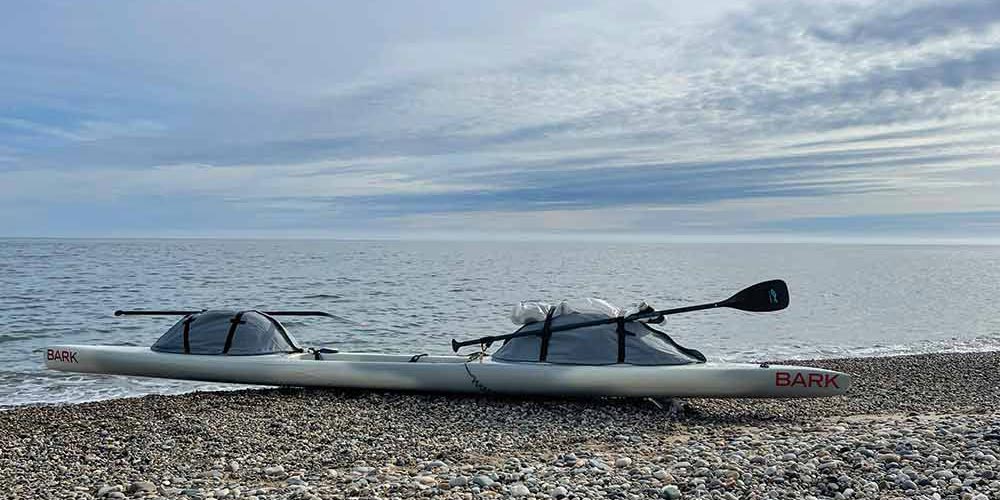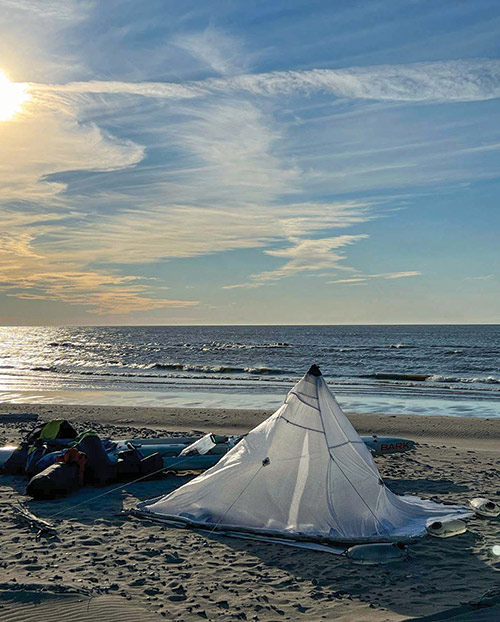||| FROM 48NORTH.COM |||
She was surrounded by women. They all sat on the bench at the front of the community hall in the center of Paulatuk in the Inuvik region of Canada’s Northwest Territories. She looked me in the eyes, pausing to take another drag of her cigarette. Her expression was wrinkled into a permanent squint against the relentless Arctic. It was impossible to tell how old she was, though she was clearly a lot older than the others. Her hands were deft, her movements subtle, and the sparkle in her eyes indicated enormous depth and a certain playful skepticism.
She spoke quietly. They all heard her, deferred to her, and silenced themselves as she spoke. Their social discipline was not lost on me. I was raised under the axiom that a person should only speak when they have something of meaning to share, and that ”those who speak most, have the least to say.” This woman clearly had something to say.
She addressed me, her gaze unwavering, with the warm confidence of one who is secure in their community, beliefs, heritage, and experience. She was bold, yet kind; strong, yet unassuming. She asked me, “You came in the canoe, hey?” in that beautiful, lilting, and deeply comforting way that Inuit have. They all waited patiently while I triangulated the answer to her question. I had only been in town for maybe 30 minutes, arriving on my standup paddleboard (SUP) after pulling a 70-mile all-nighter from Cape Parry to complete this leg of the journey.
I had departed Tuktoyaktuk (Tuk) 15 days prior. In 2017, I decided I would like to paddle a SUP through the Northwest Passage. After one false start and loads of training, I began the project this year. Stepping off the beach and paddling alone into the Arctic was the hardest thing I have ever done. Also the most fruitful because the greater the risk, the greater the reward.
As I set out from Tuktoyaktuk, I keenly felt the difference between risk appetite and risk tolerance. I was scared shitless. In July of 2019, I had rolled into Tuk, clearly sporting an appetite for risk… but ultimately paused the expedition to give myself more time to prepare. In July of 2022, my shoreside expedition crew, Scott and Elyn, drove with me into Tuk, I packed up my stuff, and I shoved off. I was in Tuk for under an hour. With the scantest suggestion of a safety net, I went for it — proving that my risk tolerance and preparation was vastly stronger than my first attempt.

The board was extremely heavy, and I almost pulled myself right over the nose on the first couple of strokes. My kit weighed in at 398 pounds at the start of the journey, including my custom BARK Expedition SUP and myself — I’d be relieved of food and fuel weight, as well as 17 pounds of body mass, in the ensuing 15 days.
It was a beautifully sunny and slightly breezy day, and it took a couple of hours for Tuk to inch below the horizon behind me. Getting comfy with a solo SUP paddling expedition in the Arctic felt like breaking in a new pair of leather boots in those first few days.
Soon, I was paddling straight into a strong easterly headwind. I battled upwind for as long as I could before posting up on the beach. The terns and sandhill cranes scolded me for a day while I stood by, impatiently working on my Arctic tan, counting bear and wolf tracks, and hoping the wind would shift to a westerly.
When the westerly came, it was stout. On the third and fourth days out, I found myself alone in the Arctic Ocean — well out of sight of land, surfing my board in steep, cold, crumbling seas with the board completely submerged. I hadn’t planned to be a submariner. Whatever the craft, mariners are tested by how well they accept the unexpected and keep moving forward. I stood in the footwells of the board with water halfway up my calves for two days. It added a certain spice to the already mind-altering undertaking. As it turns out, submarines are quite stable, and pretty fast too.
Late on the fourth day, wind and current created a jumbled sea state. I was on my knees and paddling hard to round a point. I had just seen my first caribou and beluga. All the while, I had been keeping an eye on a cigar-shaped front approaching from the west. I watched the showers that developed along the cloud front. Just short of my daily goal, the wind suddenly veered northerly and started gusting 25 to 30 knots. Resistance was futile. I allowed the conditions to guide me to shore.

There’s no shortage of beauty in a simple Arctic SUP camp, once you manage to get your tent pitched in the gusty winds.
I battled with my tent to get it pitched. Every time I poked a stake into the permafrost, a gust would come, flog the tent, and yank it out. I finally piled all my gear on top of the flogging tent, and got it staked out before sliding the pole in to stand it up. It was a memorable blow. For the rest of the trip, I warily eyed the horizon during each crossing. I had learned how quickly things can happen in the Arctic.
My third significant crossing brought me from Tuk Peninsula to Nicholson Island. I was running low on water, and knew I could find some 15 miles across the bay. But 15 might as well be 50 when you can’t see anything. I had already paddled almost 45 miles. Though the previous cold front was on my mind, the horizon looked friendly enough so I went for it. I quickly started passing large floats of brash ice and “bergy bits” — smaller pieces of the winter pack ice that was breaking up farther to the east and north. The sounds of lapping waves around the ice bits, coupled with the beluga whistles and squeaks were my soundtrack. The weather held. That night, I found water.
In the Arctic, you are forced to accept your insignificance. You must exist in a space of brutal honesty and humility. If there are obstructions in your psyche, nature will reveal and grind away at them. Ignorance of this fact has crushed many expeditions. The tiniest decisions invite dire consequences, and traveling alone amplifies these realities. My body was enduring the physical challenges of an Arctic journey, but those first days showed me that it would take all of my faculties to find my way. The charts are inaccurate and the compass is increasingly useless as you near the poles. Thick fog formed rapidly, and the low points of tundra slipped away over the horizon very quickly. I had no choice but to dig deeper for navigational clues.










I was spellbound by this accounting, from the first paragraph to the last. As I sit here in my cushy low income apartment and electric heat, I have profound respect for this man and what he writes and does.